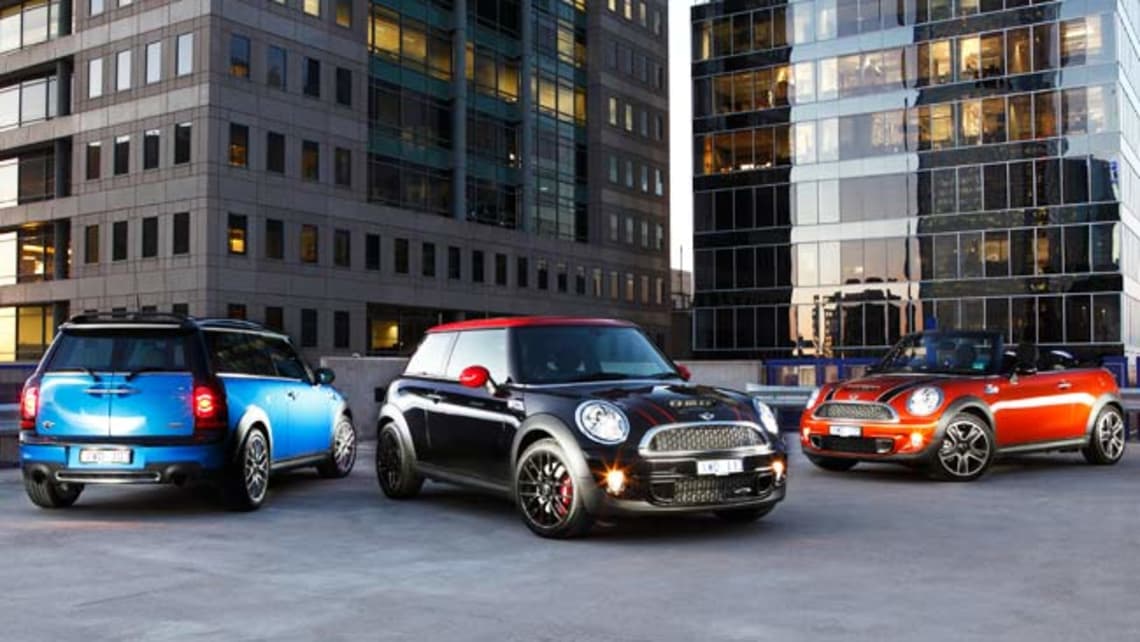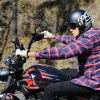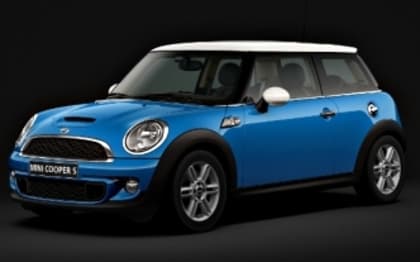
Mini 2011 Review
- Mini Cooper
- Mini Clubman
- Mini Cabrio
- Mini Cabrio 2011
- Mini Clubman 2011
- Mini Cooper 2011
- Mini Cooper Reviews
- Mini Clubman Reviews
- Mini Cabrio Reviews
- Mini Reviews
- Mini Convertible Range
- Mini Hatchback Range
- Mini Wagon Range
- Convertible
- Hatchback
- Wagon
- Mini
- Prestige & Luxury Cars

Extra features and a more efficient diesel engine are claimed to justify a "modest" price hike on the updated Mini range. According to Mini Australia Product Planning Manager Sue McCarthy, the price increases have been kept to a "minimum" of $400 for Cooper and JCW and $600 for the Cooper S, while the diesel is up $1000.
"We understand there are a lot more competitors in the market but more competitors stimulate market demand in that segment," she says.
"We don't view that as a negative thing. It keeps people on their toes and promotes competition."
Mini's response to the competition has been to increase the level of standard features to the mid-life model update, rather than drop prices.
Corporate communications manager Piers Scott points out that they sell very few basic Minis.
"So by building more value, we can justify a modest price uplifting," he says. "We don't think price will be an issue."
Scott says the cosmetic changes are subtle but the upgraded technology is "significant". "There is now more Mini: more customisation, more efficiency and more technology," he says.
"All changes are driven from talking to our customers. If we don't do something right we hear from our customers straight away."
VALUE
Extra standard features include rain-sensing wipers, auto headlights, Bluetooth (Bluetooth music streaming is an optional extra), USB input, fog lights (Cooper D already had them) and velour floor mats.
Mini claims that for the extra $400 for the Cooper and JCW and $1000 more for the diesel you get $1450 of extra features ($950 for the JCW) and for the extra $600 for Cooper S you get $1150 in features.
While you can't put a value on the styling changes inside and out, at least the knobs on the airconditioning and audio now feel much better quality.
The previous knobs felt like flimsy plastic margarine tubs. The new knobs are more sturdy with a rubberised feel. It is debatable whether these changes warrant the extra price.
Options include a $750 "radio visual boost" upgraded audio system with LCD screen, joystick control and on-board computer, and an updated $1900 "business navigation" system, previously $2900.
Mini has also added several optional feature packages that are claimed to provide a substantial value saving on ordering the features separately. The $1125 city package adds park distance control, alarm and auto dipping interior and exterior mirrors.
The lighthouse package adds adaptive Xenon headlights and clear indicator lens and costs $700-$1600, depending on the model. The $970 body package on the Cabrio adds a wind deflector, heated seats and a timer that tells you how long you've had the to down.
There is also a cargo package that adds roof rails and a flat-load compartment floor for $825. The popular $3900 Chilli package is retained, but with revised content.
All these extras, along with the wide choice of trims, upholstery, wheels and exterior colours and striping give the Mini extended individualisation possibilities which, to a Mini owner, are invaluable.
TECHNOLOGY
The big change in technology is the bigger BMW-derived 1.6-litre diesel engine that replaces the 1.4. It has 82kW of power and a 30Nm torque increase to 270Nm.
Emissions of CO2 are down to an impressive 99g/km while fuel economy is down 0.1L/100km to 3.8. It comes with a six-speed manual gearbox with auto start/stop function, gearshift indicator to encourage frugal driving, brake energy regeneration and economical electric power steering.
An automatic gearbox for the diesel will not arrive until the Mini gets the BMW 2.0-litre diesel from the 120d and 320d. It begins production in March and should arrive in June.
The engine will have the same output as the current 1.6-litre unit but with different torque characteristics. It will be mated to the six-speed ZF automatic transmission, but will not include auto stop-start technology.
The first BMW group product with stop-start in an auto transmission will be the new X3. The Cooper and Cooper S petrol engines had technical upgrades earlier this year that lifted power 2kW (7kW for S) with a slight decrease in emissions, plus better economy and acceleration figures.
For the first time, Mini gets optional adaptive headlights which turn with the steering wheel to illuminate a corner. They are only available with the lighthouse package.
STYLE
Despite the vehicle being 99mm longer, all proportions are retained and exterior design changes are so subtle, few will notice them. They include more pronounced fog lights, extra air ducts in the Cooper S, LED taillights and a higher Cooper bonnet to match the Cooper D and meet strict European pedestrian safety regulations.
The most significant changes to design are inside. Although the general layout with toggles and large dishplate speedo remain, there is more quality in the trim levels and feel. McCarthy says the interior has a "quieter appearance" with more use of dark tones.
IT may be cute and even pretty, but Mini is still predominantly bought by males. Mini Australia boss David Woollcott says 55 per cent of buyers across the range are males.
"I think it's got to do with the fact that we (Australians) are the highest ratio of JCW buyers in the world and have a focus on racing heritage," he says.
However, the Cabrio and Clubman models appeal more to women, with female buyers accounting for 80 per cent of sales. Mini Cooper makes up 75 of total Mini sales, Clubman 10 per cent and Cabrio 15 per cent.
DRIVING
To drive home Mini's famed go-kart handling characteristics, which are unaltered with the mid-life updates, Mini launched the new models with a motorkhana in an airport hangar at Avalon, south-west of Melbourne.
The surfaces shifted from painted concrete to asphalt to a concrete apron giving a feel for the high levels of grip, the nimble change of direction and the extra feel provided by the "sport" button which sharpens the steering and throttle response.
Out on the road, the Mini feels precise and engaging as always. With no changes to the mechanicals, the drive down the Great Ocean Road was superfluous fun. Even the new diesel felt little different to the old one, with the same output and handling characteristics.
The real test of the changes was in the operation of the audio system which now has the confusing volume and tuning knob replaced with a more user-friendly arrangement.
Another "test" was in the access to the rear seats in the cabrio which now allows the seatbelt to be hooked under the cupholder so it isn't in the way.
VERDICT
Extra customisation may confuse some buyers, but typical Mini owners highly value the ability to make their Mini as close to unique as you can get with a mass-produced vehicle.
MINI 2011
Cooper hatch: from $31,500
Engine: 90kW/160Nm 4-cylinder petrol
Transmissions: six-speed manual, six-speed auto
Fuel consumption: 5.4-6.9L/100km
CO2 (g/km): 127-160
Cooper S hatch: $40,500
Engine: 135kW/240-260 Nm 4-cylinder turbo petrol
Transmissions: six-speed manual, six-speed auto
Fuel consumption: 8.3-9.5L/100km
CO2 (g/km): 136-159
Cooper D hatch: from $34,750
Engine: 82kW/270Nm 4-cylinder turbodiesel
Transmissions: six-speed manual
Fuel consumption: 3.8L/100km
CO2 (g/km): 99g per km.
JCW hatch: from $49,200
Engine: 155kW/260-280Nm 4-cylinder twin-scroll turbo petrol
Transmissions: six-speed manual, six-speed auto
Fuel consumption: 6.9-7.0L/100km
CO2 (g/km): 165-169
Cooper Clubman: $34,800
Engine: 90kW/160Nm 4-cylinder petrol
Transmissions: six-speed manual, six-speed auto
Fuel consumption: 5.4-6.9L/100km
CO2 (g/km): 127-160
Cooper S Clubman: from $43,800
Engine: 135kW/240-260 Nm 4-cylinder turbo petrol
Transmissions: six-speed manual, six-speed auto
Fuel consumption: 8.3-9.5L/100km
CO2 (g/km): 136-159
JCW Clubman: from $51,700
Engine: 155kW/260-280Nm 4-cylinder twin-scroll turbo petrol
Transmissions: six-speed manual, six-speed auto
Fuel consumption: 6.9-7.0L/100km
CO2 (g/km): 165-169
Cooper Cabrio: from $40,200
Engine: 90kW/160Nm 4-cylinder petrol
Transmissions: six-speed manual, six-speed auto
Fuel consumption: 5.4-6.9L/100km
CO2 (g/km): 127-160
Cooper S Cabrio: from $48,600
Engine: 135kW/240-260 Nm 4-cylinder turbo petrol
Transmissions: six-speed manual, six-speed auto
Fuel consumption: 8.3-9.5L/100km
CO2 (g/km): 136-159
JCW Cabrio: from $57,300
Engine: 155kW/260-280Nm 4-cylinder twin-scroll turbo petrol
Transmissions: six-speed manual, six-speed auto
Fuel consumption: 6.9-7.0L/100km
CO2 (g/km): 165-169
Pricing guides
Range and Specs
| Vehicle | Specs | Price* | |
|---|---|---|---|
| D | 1.6L, Diesel, 6 SP MAN | $10,120 – 13,860 | 2011 Mini Cooper 2011 D Pricing and Specs |
| D Chilli | 1.6L, Diesel, 6 SP MAN | $11,550 – 15,400 | 2011 Mini Cooper 2011 D Chilli Pricing and Specs |
| S JCW | 1.6L, PULP, 6 SP MAN | $14,960 – 19,690 | 2011 Mini Cooper 2011 S JCW Pricing and Specs |
| Ray | 1.6L, PULP, 6 SP AUTO | $7,920 – 11,110 | 2011 Mini Cooper 2011 Ray Pricing and Specs |
$7,495
Lowest price, based on 12 car listings in the last 6 months








